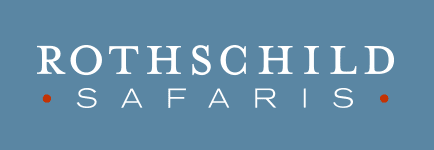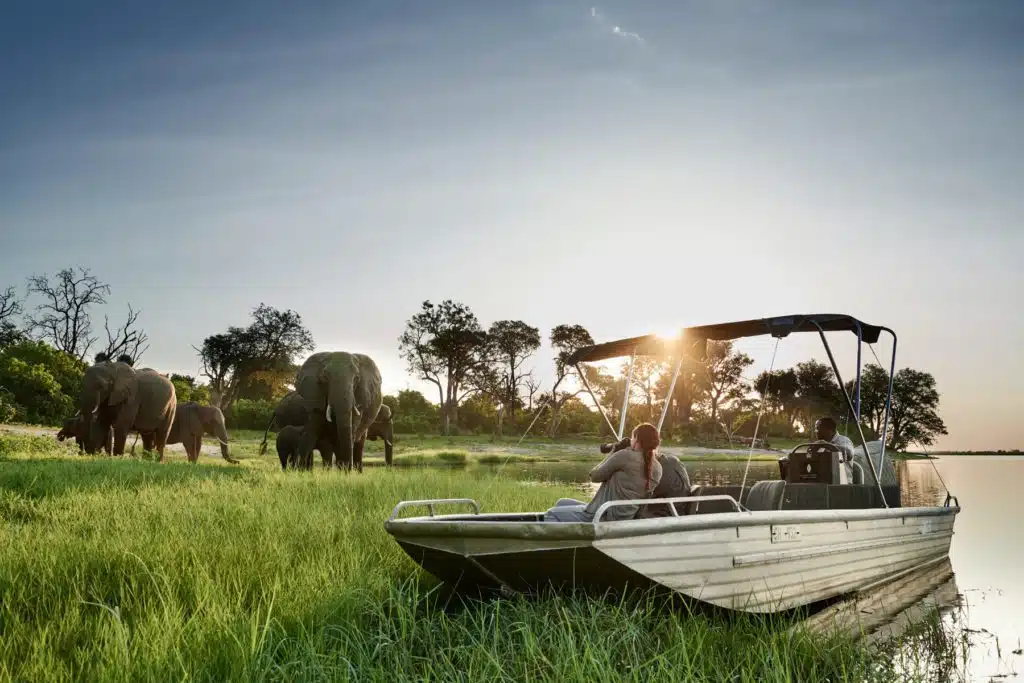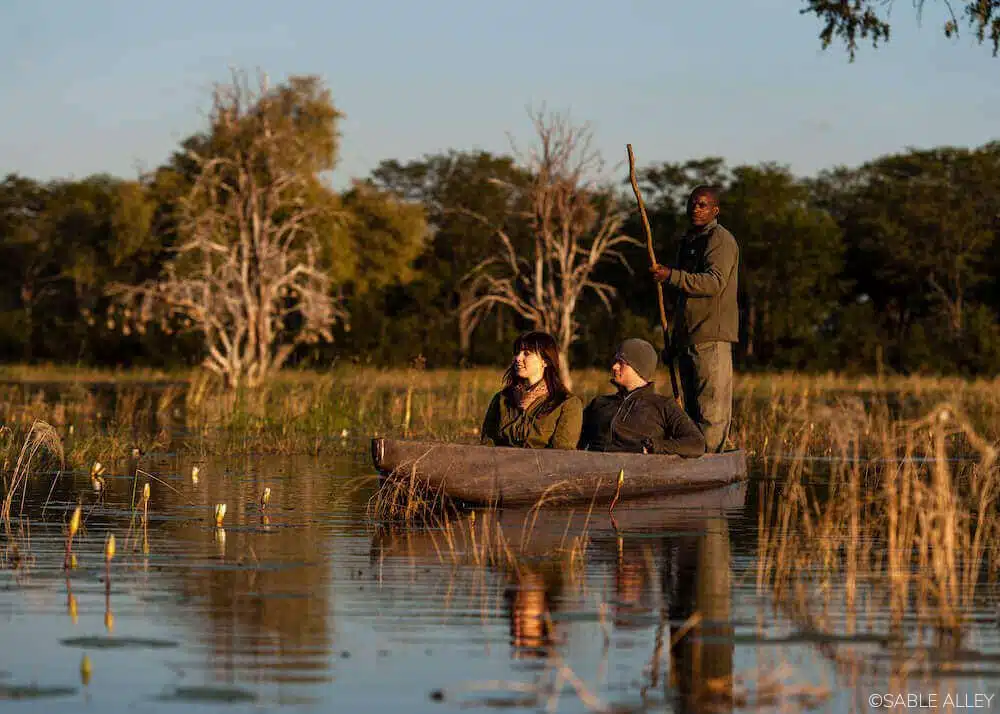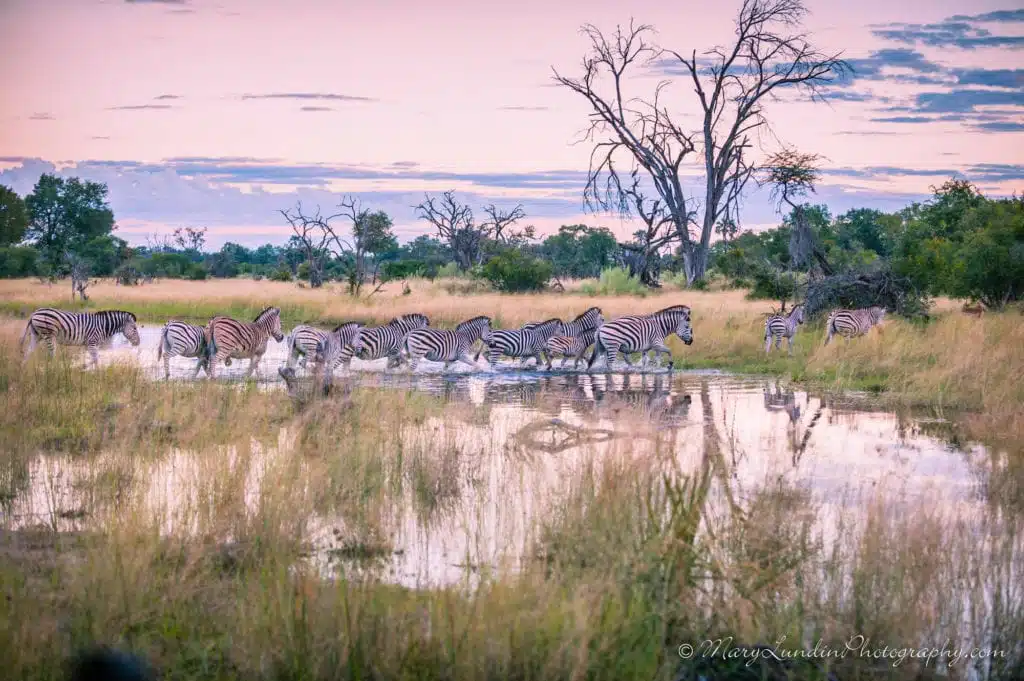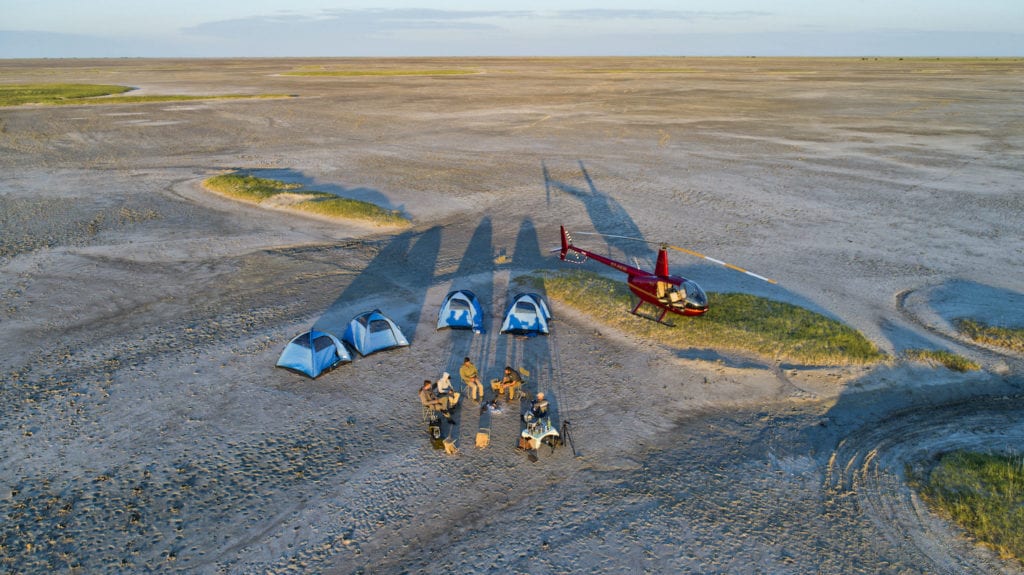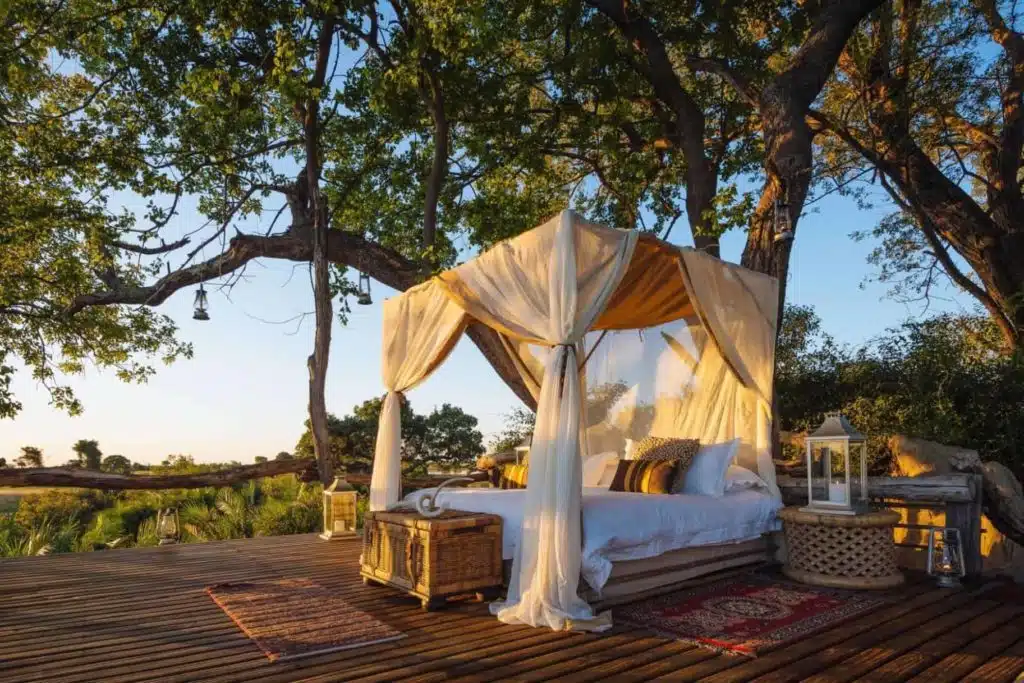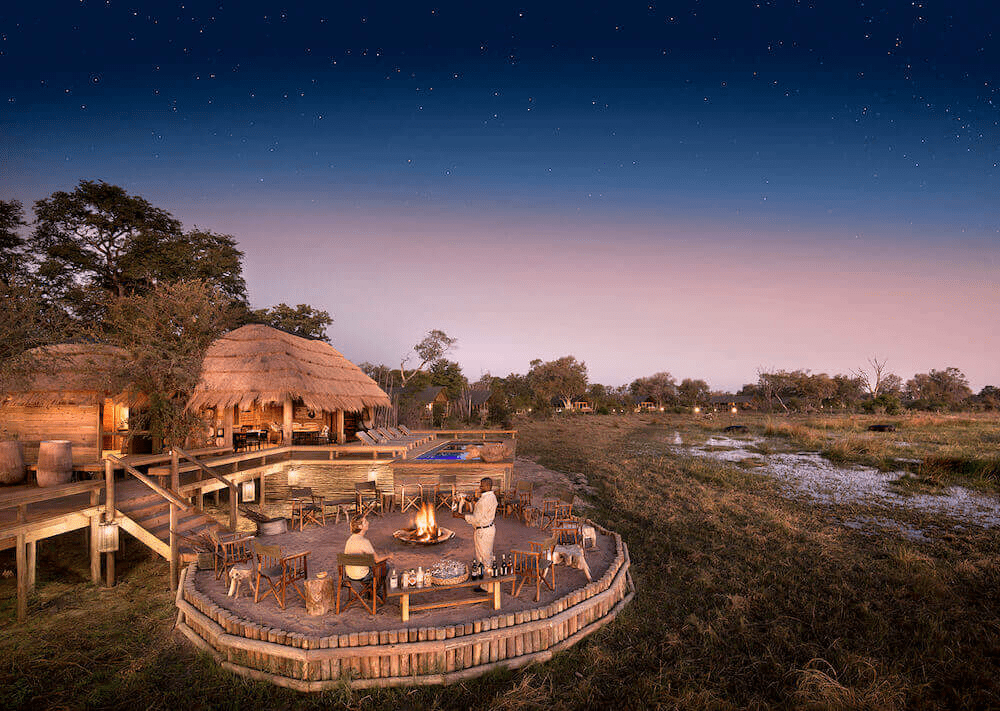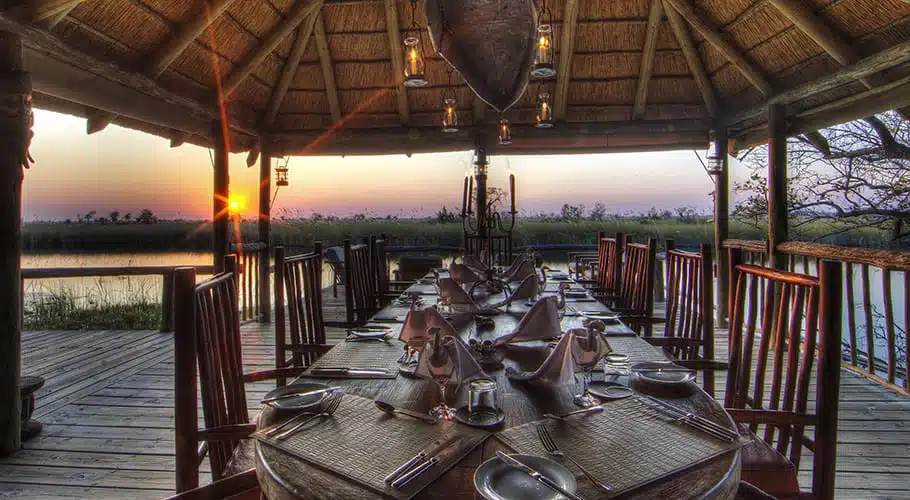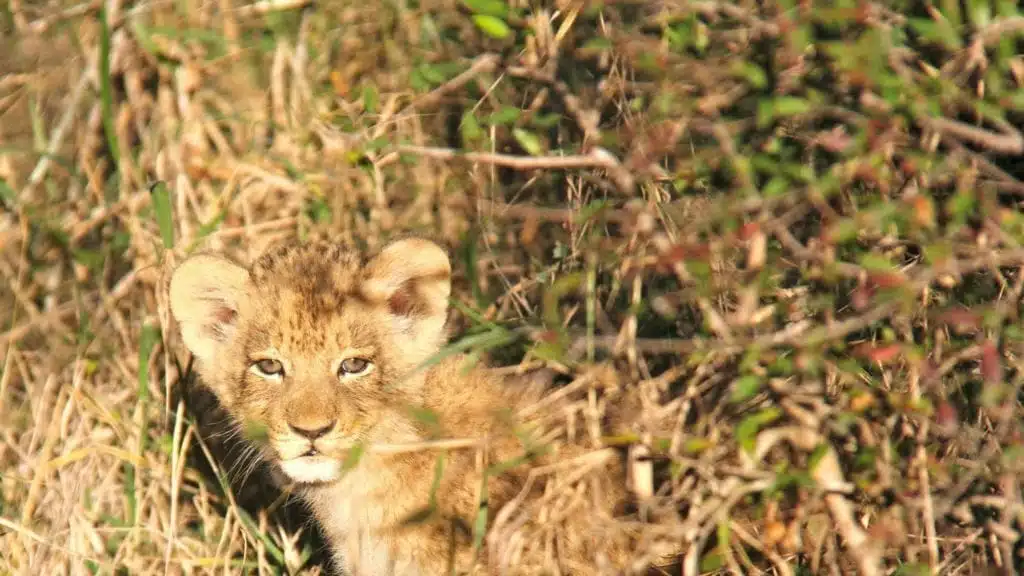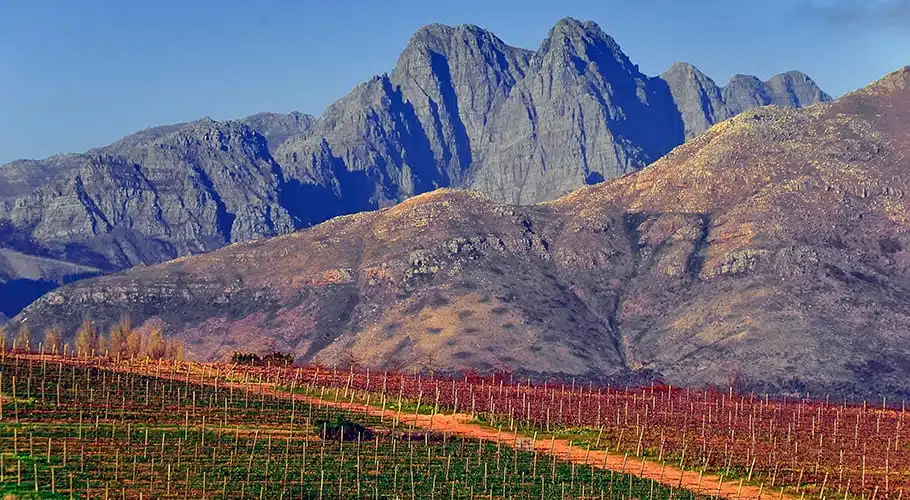HOW LONG SHOULD I SPEND IN BOTSWANA?
We advise spending at least four days in Botswana, even if you are only wishing to highlight one or two specific experiences. You could very easily spend two weeks or more in Botswana alone, and with its wealth of life, it is, in many regards, a ‘complete’ African experience.
WHEN IS THE BEST TIME TO VISIT BOTSWANA?
Botswana enjoys good wildlife viewing throughout the year despite varied weather. Dry season temperatures can be extreme in both directions, ranging from 40°F (10-12°C) in the mornings and evenings to 90°F (mid-30s°C) during the daytime.
Peak season is between July and February, with the plains rich in life and the delta in flood. While in many ways this time provides the ‘best’ of Botswana, it is also the busiest time of year, so if you are searching for seclusion, it might be better avoided. Discuss the right time to visit Botswana with your travel designer.
Botswana has two seasons: rainy or ‘green’ and dry. From November to April the rains fill the Okavango, both with water and migratory wildfowl. While spectacular, and numerous regions of Botswana providing numerous unique experiences, the morning and evening rains require you to be a little prepared and pack accordingly. From May to October the rains abate, giving way to lush grasslands that become progressively parched as the dry season continues. Early mornings and evenings can still be a little chilly, so warmer jackets are required, though the heat of the day will also require a good supply of lighter clothing.
WHAT CAN I EXPECT FROM ACCOMMODATION IN BOTSWANA?
Accommodation is as varied as the nation’s landscapes. Luxurious lodges and remote canvas-roofed camps are scattered across Botswana, taking the greatest advantage of the country’s most iconic offerings. Chobe River even boasts the luxury Zambezi Queen, a deluxe riverboat with 14 plush cabins. Wherever you go and wherever you may stay, you will find exquisite venues with service second to none.
Like everything else in Botswana, you will find excellent international cuisine from the chefs throughout your safari. As always, for specific dietary requirements, please inform your travel designer who will ensure that your needs are expertly catered for.
Guiding is of a very high standard in Botswana and you always be in experienced hands, informatively guiding you to the perfect destination to witness nature at its finest.
OTHER DETAILS:
Visas are not required for most visitors, but inoculations may be recommended. We suggest you contact your travel designer or a travel medicine specialist for advice.
Tswana is the official language of Botswana, but you will find English widely spoken throughout the country.
